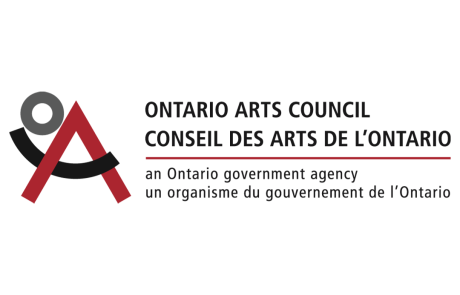Film Eco-Processes As A Land-Based Pedagogy
By Antonio Catrileo
The filmmakers and artists Azucena Losana and Elena Pardo generously offered an Eco-Processes workshop for film development at Artscape Gibraltar Point, Toronto. Surrounded by vegetation and beaches, the city could be seen from a different point of view, one which made possible a much more intimate experience of sharing knowledge between filmmakers and artists. During this opportunity Losana and Pardo shared how they have been developing various dyeing techniques for many years with their LEC (Laboratorio Experimental de Cine) Collective, in relation to knowledge from Oaxacan weavers. Specifically, they mentioned how the dying process to obtain the red colour is the result of knowledge that the weavers have, and they detailed how these weavers have been taking care of this knowledge for many generations.
For example, the cochinilla, an insect that lives in nopales, is very valuable because it can be used to produce a carmine red dye. Weavers have utilized this red dye to add colour to sheep’s wool and cotton which is then used for spinning thread and weaving. This principle of observing and relating with the non-human world and recognizing biodiversity comes from Indigenous knowledge and is known as relationality. Just as the cochinilla, the nopal, and the weavers create a reciprocal relationship, cultivated over centuries, Losana and Pardo have had the opportunity to access this knowledge after establishing good relationships with Oaxacan communities. And, as a result, their filmic practice too cultivates relationality, a practice that requires engagement with the community.
Dying techniques are varied and depend on many factors. For one, techniques are localized and draw from specific, land-based knowledges which requires a deep understanding of the territory one inhabits. Each place has specific plants, insects, fungi, minerals, and animals. All these elements present options to generate different colours. Creating a practice of using eco-processes, Losana and Pardo shared with the participants details about their experiences experimenting with plants, minerals, and raw materials. As weavers themselves, they take the film as a medium and immerse it in the contact of ecological developers to obtain colours that can adhere to the film as an alternative for chemical developers . There is a playful aspect of introspection in the experimentation process, and a generous understanding of what relationality is.
In this workshop, they taught participants how to dye the film with hibiscus and tamarind flower extracts, mixing them with sodium carbonate, ascorbic acid, and potassium bromide. It required a lot of patience for the mordants to fix the images on the film. The creation became a communal practice stimulated by curiosity, a process that taught participants other possibilities for working with analog film. This practice is transformative, and it is also a land-based pedagogy—where light has been sustenance for the life of those plants, where light is then embodied in the film. These are land-based teachings, learning to transform the elements in an organic way.
Temporality is another aspect that is fundamental in these teachings. It is necessary to know how long it takes, how much time is spent waiting. Some participants began to ask for explanations of the chemical reactions, they were curious because of their familiarity with developing film using other techniques that have a harmful impact on the environment. But in this case, this Film Eco-Processes workshop offered a different notion of what film development entails. It was about intimacy. Developing otherwise, beyond the idea of progress, becomes a practice of care, of preparing concentrates of plants that are used as medicine. A ritual aspect emerges in this practice, one that honors relationality without apprehension around deterioration, decomposition, and fixation on the dye’s need to have an extended duration.
It is interesting how this practice of using eco-processes leads to the questions around why film should have an eternal duration, or at what cost the archival compulsion impacts the environment. It also opens up the question of reflection, calling artists to reflect on and look for other ways of making colour—colours that may slowly fade and cannot be fully captured, colours that speak to the passage of time as transformational and unique experiences. All these elements make the process itself a unique experience, where there are recipes that have been shared but are difficult to standardize and to be mass marketed. There is something powerful in this gesture that I will never forget.
 Manuel Carrión Lira (he/they) is a Pikunche researcher, video-artist, and curator from Pikunmapu/Qullasuyu (Quillota, Chile). They are a PhD Candidate in Cultural Studies in Department of Literature at the University of California San Diego. Manuel holds a M.A. in Latin American Art, Thought and Culture from the Instituto de Estudios Avanzados at Universidad de Santiago de Chile, and a B.A. in Design at Universidad de Valparaíso. Member of the Catrileo+Carrión Community, where they have collectively published the books “Poyewün Nütramkan Pikunmapu/Qullasuyu” (2020), “Poyewün witral: bitácora de las tejedoras de Neltume” (2019), “Torcer la palabra: escrituras obrera-feministas” (2018) and “Yikalay pu zomo Lafkenmapu” (2018). Manuel is part of the Global Center for Advanced Studies Latin America Collective. Manuel’s work focuses on Indigenous Media at the intersection with Trans-indigenous/Transnational kinship networks beyond the nation-state framework, all of this with special attention to queer/trans/2S/epupillan Indigenous cultural production.
Manuel Carrión Lira (he/they) is a Pikunche researcher, video-artist, and curator from Pikunmapu/Qullasuyu (Quillota, Chile). They are a PhD Candidate in Cultural Studies in Department of Literature at the University of California San Diego. Manuel holds a M.A. in Latin American Art, Thought and Culture from the Instituto de Estudios Avanzados at Universidad de Santiago de Chile, and a B.A. in Design at Universidad de Valparaíso. Member of the Catrileo+Carrión Community, where they have collectively published the books “Poyewün Nütramkan Pikunmapu/Qullasuyu” (2020), “Poyewün witral: bitácora de las tejedoras de Neltume” (2019), “Torcer la palabra: escrituras obrera-feministas” (2018) and “Yikalay pu zomo Lafkenmapu” (2018). Manuel is part of the Global Center for Advanced Studies Latin America Collective. Manuel’s work focuses on Indigenous Media at the intersection with Trans-indigenous/Transnational kinship networks beyond the nation-state framework, all of this with special attention to queer/trans/2S/epupillan Indigenous cultural production.
 Antonio Catrileo (they/them) is a Mapuche writer, artist, and weaver from Pikunmapu/Qullasuyu (Curico, Chile). Currently is a student at the PhD in Ethnic Studies at the University of California San Diego. They hold a B.A., M.A. in Chilean and Hispanic Literature at Pontificia Universidad Católica de Valparaíso. Author of the book “Awkan epupillan mew:dos espíritus en divergencia” (2019) and “Diáspora”(2015). Member of the Catrileo+Carrión Community, where they have collectively published the books “Poyewün Nütramkan Pikunmapu/Qullasuyu” (2020), “Poyewün witral: bitácora de las tejedoras de Neltume” (2019), “Torcer la palabra: escrituras obrera-feministas” (2018) and “Yikalay pu zomo Lafkenmapu” (2018). Currently is a collaborator of Global Center for Advanced Studies Latin America Collective. Their work is presented as a critical intervention in how colonial categories have been imposed on notions of sexuality and gender in the Mapuche context. Catrileo claims the word epupillan (two-spirit) as a generative practice that focuses on not reproducing the damage of the archive’s narratives in order to imagine a Mapuche futurity beyond the politics of recognition, nation, and identity. Epupillan is a situated knowledge shared by several elders who are HIV/AIDS activists and defenders of the land.
Antonio Catrileo (they/them) is a Mapuche writer, artist, and weaver from Pikunmapu/Qullasuyu (Curico, Chile). Currently is a student at the PhD in Ethnic Studies at the University of California San Diego. They hold a B.A., M.A. in Chilean and Hispanic Literature at Pontificia Universidad Católica de Valparaíso. Author of the book “Awkan epupillan mew:dos espíritus en divergencia” (2019) and “Diáspora”(2015). Member of the Catrileo+Carrión Community, where they have collectively published the books “Poyewün Nütramkan Pikunmapu/Qullasuyu” (2020), “Poyewün witral: bitácora de las tejedoras de Neltume” (2019), “Torcer la palabra: escrituras obrera-feministas” (2018) and “Yikalay pu zomo Lafkenmapu” (2018). Currently is a collaborator of Global Center for Advanced Studies Latin America Collective. Their work is presented as a critical intervention in how colonial categories have been imposed on notions of sexuality and gender in the Mapuche context. Catrileo claims the word epupillan (two-spirit) as a generative practice that focuses on not reproducing the damage of the archive’s narratives in order to imagine a Mapuche futurity beyond the politics of recognition, nation, and identity. Epupillan is a situated knowledge shared by several elders who are HIV/AIDS activists and defenders of the land.
Communidad Catrileo+Carrion are queer/trans/nonbinary Indigenous epupillan (two-spirit) beings who work articulating generative spaces of reciprocity and relationality. They honor the land and their ancestors through ceremonies materialized in their audiovisual, textile, editorial, curatorial, and community practices. Communidad Catrileo+Carrion reside divided between Pikunmapu/Qullasuyu (Valparaíso Region, Chile) and Kumeyaay Territory (San Diego, California, USA). The group is currently composed of Antonio Catrileo Araya, Constanza Catrileo Araya, Malku Catrileo Araya, Alejandra Carrión Lira, and Manuel Carrión Lira.









